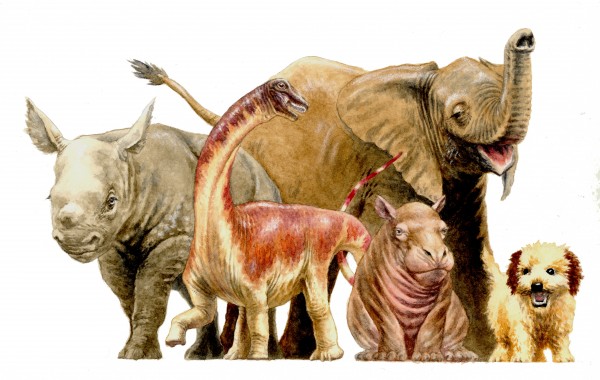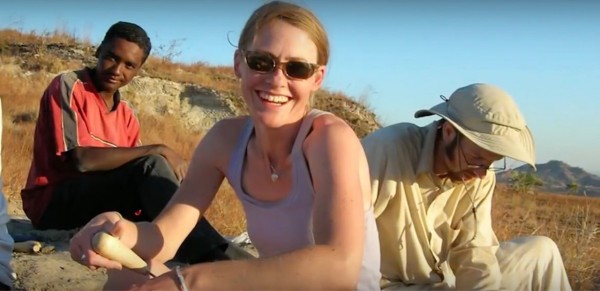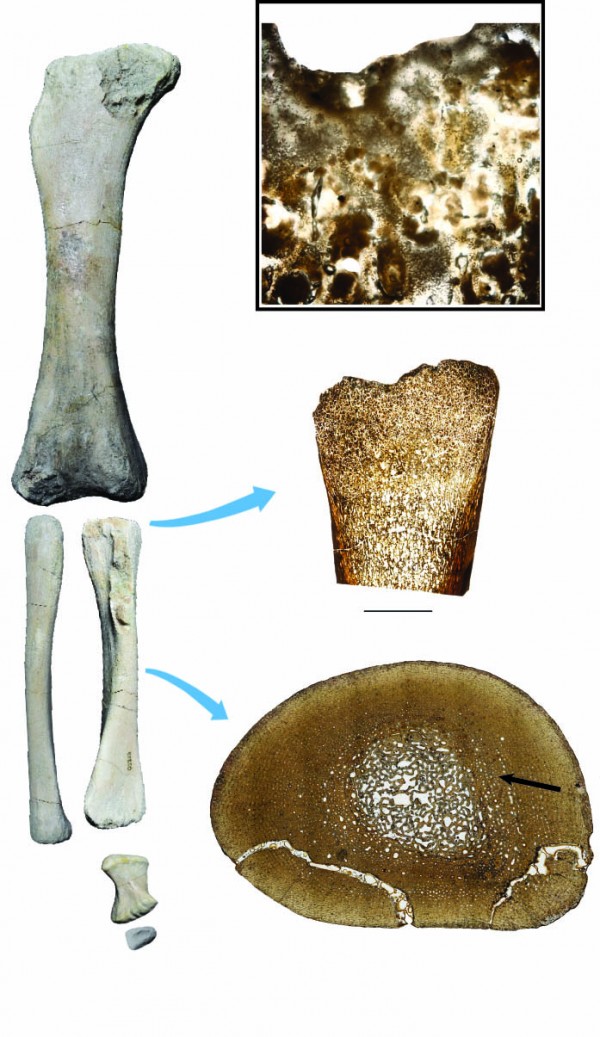
Massive dinosaurs known as sauropods were among the largest animals to ever walk the Earth. They had small heads at the end of very long necks, and long tails. These behemoths, however, began life as hatchlings from eggs about the size of a soccer ball. Little is known about juvenile sauropods because fossils from that age group are scarce. But new research on the fossil remains of a baby Rapetosaurus krausei – a species of sauropod – indicates that these dino babies had all the body features of adults, allowing them to be self-reliant with little parental care.
In contrast, studies of other dinosaur groups, such as theropods and ornithischians, have indicated that many baby dinosaurs did require their parents to care for them.
The researchers published their work, which reveals new details about the lives of young sauropods, in the April 22, 2016 issue of the journal Science.

Rapetosaurus roamed what is current-day Madagascar during the late Cretaceous, about 100 to 66 million years ago. They were a type of sauropod known as titanosaurus, the giants among sauropod dinosaur species, and the largest-known land animals. An adult Rapetosaurus grew to about 50 feet (15 meters) in length.
That’s amazing considering the soccer-ball-sized eggs from which they hatched.
Kristi Curry Rogers of Macalester College led the study describing the finding of the baby Rapetosaurus fossils. A partial skeleton had been discovered in the Upper Cretaceous Maevarano Formation of Madagascar. The bones were so small that researchers originally thought they belonged to a crocodile.
Curry Rogers recognized the bones as belonging to a baby Rapetosaurus. She and her team now believe that baby Rapetosaurus were like miniature versions of the adults, born ready to move on their own without assistance. She remarked in a statement:
This baby’s limbs at birth were built for its later adult mass; as an infant, however, it weighed just a fraction of its future size.
This is our first opportunity to explore the life of a sauropod just after hatching, at the earliest stage of its life.


Life for this particular dinosaur baby, however, was apparently extremely harsh. The research team studied thin sections of the tibia, the long leg bone that connects the knee to the ankle. They used a powerful CT scanner to inspect microscopic structures preserved in the fossil bone. Curry Rogers said:
We looked at the preserved patterns of blood supply, growth cartilages at the ends of limb bones, and at bone remodeling.
These features indicate that Rapetosaurus grew as rapidly as a newborn mammal and was only a few weeks old when it died.
Apparently, the baby dinosaur died of starvation.
The team also found well-preserved microscopic zones inside the bone, marking phases of bone growth as the baby dinosaur transitioned from an embryo to a hatchling.
Similar features are seen in the bones of present-day reptiles, and also in present-day newborn mammals. These zones allowed the researchers to estimate the baby Rapetosaurus’ weight. It was about 7.5 pounds (3.4 kilograms) at birth. When it died, the baby weighed about 88 pounds (40 kilograms) and its height at the hips was about a foot (0.3 meters).

Why did the baby Rapetosaurus die at such a young age? The researchers found clues in its cartilage growth plates.
In vertebrates, cartilage plates are found in juveniles. Located near both ends of long bones like the tibia, these plates create cartilage that develops into hard bone as the juvenile grows. At adulthood, when the bones are fully grown, the plates become calcified.
The baby Rapetosaurus’ cartilage plates showed features indicating starvation towards the end of its life, just a few weeks after it hatched. It’s a finding that correlates with other research indicating that the region, during this young dinosaur’s life, was undergoing severe drought conditions.
Curry Rogers commented:
Between its hatching and death just a few weeks later, this baby Rapetosaurus fended for itself in a harsh and unforgiving environment.

Bottom line: Sauropods, the largest dinosaurs, began life as hatchlings from eggs about the size of a soccer ball. Little has been known about their early years. But now a new study on the fossil remains of a baby Rapetosaurus krausei, a sauropod species, shows that baby sauropods were like miniature versions of their parents, and were likely self-reliant.











